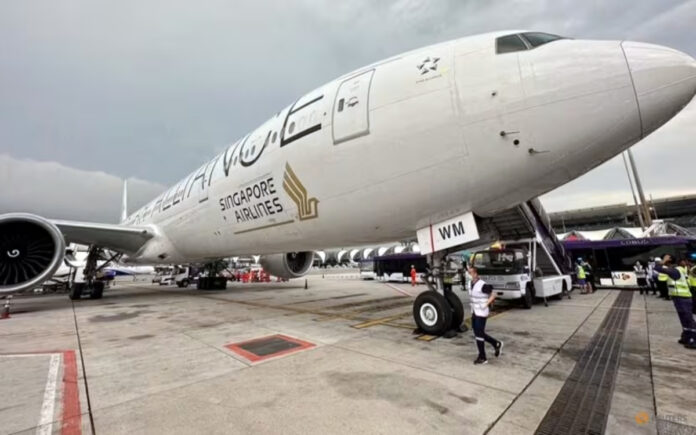Singapore: Preliminary findings from an investigation into a turbulent episode aboard a Singapore Airlines flight last week have revealed startling insights. The incident, which occurred during a flight from London to Singapore, resulted in injuries attributed to a sudden gravitational force change and a significant drop in altitude.
Tragically, a 73-year-old passenger passed away due to a suspected heart attack, while numerous others suffered injuries when Flight SQ321 encountered severe turbulence over Myanmar on May 21. The Boeing 777-300ER aircraft, carrying 211 passengers and 18 crew members, diverted to Bangkok for an emergency landing after being buffeted by turbulence of unprecedented intensity, propelling passengers and crew members across the cabin, some even into the ceiling.
According to the Singapore Transport Ministry, the aircraft experienced a rapid alteration in gravitational force, causing unbelted occupants to become airborne. The gravitational force shifted from negative 1.5G to positive 1.5G within a mere 4 seconds, leading to occupants falling back down. This drastic change in G-force, spanning 4.6 seconds, resulted in a sharp altitude drop of 178 feet (54 meters) from 37,362 feet to 37,184 feet, ultimately causing injuries to both crew and passengers.
Eyewitnesses described chaotic scenes following the turbulence, recounting how passengers were thrown upwards before being hurled into the aisles, leaving many with injuries, bleeding, and head wounds. Photographs from the cabin depicted significant damage, with overhead cabin panels gashed, oxygen masks and panels dangling from the ceiling, and luggage strewn across the floor.
Also Read | Syrian Refugees in Lebanon Face Heightened Restrictions and Deportations
Singapore Airlines has acknowledged the report and pledged full cooperation with the investigation. As of late Tuesday, 42 individuals from the flight remained in Bangkok, with 26 passengers undergoing medical treatment in hospitals. Among the hospitalized were individuals with spinal cord, brain, and skull injuries, as confirmed by Thai medical authorities.
The preliminary report outlined that slight vibrations prompted an uncommanded increase in altitude, leading to the autopilot pitching the aircraft downwards. Pilots reacted by applying speed brakes to manage airspeed, coinciding with the activation of the fasten seat belt sign.
Also Read | India Grand Prix Cancellation Leads to Kazakhstan Race Replacement
In response to the incident, Greater Bay Airlines in Hong Kong announced a new policy requiring passengers to fasten seat belts at all times during flights, effective immediately, as a precautionary safety measure.
The investigation team, comprising Singaporean and U.S. representatives from Boeing, the National Transportation Safety Board (NTSB), and the Federal Aviation Administration (FAA), continues its probe under the auspices of the Singapore transport ministry.



